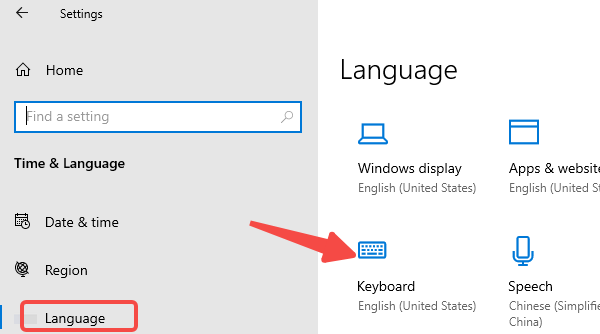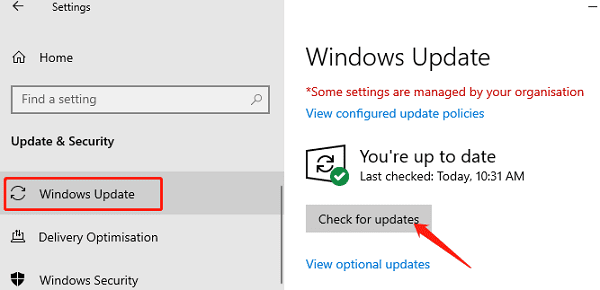
A non-working keyboard is one of the most frustrating issues a computer user can encounter. In this article, we'll walk you through a series of troubleshooting steps to help you fix a keyboard that's not working.
1. Check the Keyboard Connection
1) For Wired Keyboards
The first and simplest thing to check is whether the keyboard is properly connected to the computer. A loose or disconnected cable could be the reason your keyboard isn't responding.
Check the cable connection: Ensure that the USB or PS/2 cable is securely plugged into the correct port on your computer. For USB keyboards, try plugging it into a different USB port to see if that resolves the issue.
Inspect the cable: Look for any visible damage or fraying along the cable. If there is any visible wear and tear, it might be time to replace the keyboard.
Test the keyboard on another computer: If possible, plug the keyboard into another computer to determine if the issue lies with the keyboard or the original computer.

2) For Wireless Keyboards
Wireless keyboards rely on either Bluetooth or a USB dongle to connect to your computer. If your wireless keyboard is not working, the issue could be related to signal interference, battery power, or connectivity problems.
Check the batteries: Low or dead batteries are a common cause of wireless keyboard issues. Replace the batteries with new ones and see if this resolves the problem.
Re-pair the keyboard: If the keyboard uses Bluetooth, go to your computer's Bluetooth settings and remove the device from the list of paired devices. Then, re-pair the keyboard with the computer.
Test the USB dongle: For wireless keyboards using a USB dongle, ensure the dongle is securely plugged into a working USB port. You can also try plugging it into a different port to rule out any port-related issues.
2. Update or Reinstall Keyboard Drivers
Outdated or corrupted drivers are one of the most common causes of keyboard issues. If your keyboard isn't working, there's a chance that your system's keyboard driver needs updating or reinstalling.
Driver Sentry is a powerful driver update tool that scans your system for outdated, missing, or corrupted drivers and automatically installs the latest versions.
Download and Install Driver Sentry: Click here to download Driver Sentry.
Scan for Outdated Drivers: Once installed, open Driver Sentry and click on the "Scan" button. The software will automatically scan your computer for outdated or missing drivers.

Update Keyboard Driver: If Driver Sentry detects an outdated keyboard driver, it will offer the option to download and install the latest version automatically.
Restart Your Computer: After the driver update is complete, restart your computer to apply the changes.
3. Check Keyboard Settings
It's possible that your keyboard is working, but certain settings on your computer are interfering with its functionality.
1) For Windows Users
Sticky Keys: Sticky Keys is a Windows feature that can cause unexpected behavior with your keyboard. To turn it off:
Open the "Control Panel" and go to "Ease of Access".
Click on "Ease of Access Center" and choose "Make the keyboard easier to use".
Ensure that "Sticky Keys" is turned off.

Filter Keys: Similarly, "Filter Keys" is a feature that can cause keyboard inputs to be ignored or delayed.
In the same "Ease of Access" menu, check if "Filter Keys" is enabled and turn it off.
Keyboard Layout: Make sure the correct keyboard layout is selected. Go to "Settings" > "Time & Language" > "Language" and ensure that your preferred language and keyboard layout are chosen.

2) For macOS Users
Keyboard Preferences: Go to "System Preferences" > "Keyboard" and check for any settings that might be affecting your keyboard. Make sure that "Key Repeat" and "Delay Until Repeat" are properly configured.
Input Sources: In the same "Keyboard" section, check if your desired input source is selected under "Input Sources".
Reboot Your Computer
Sometimes, a simple restart is all it takes to resolve peripheral issues, including a malfunctioning keyboard.
Restart your computer: Close all programs and perform a full reboot. This can reset any processes that might be affecting your keyboard's functionality.
Perform a hard reboot: If your keyboard still isn't responding after a restart, try performing a hard reboot by holding down the power button until the computer shuts down completely. Wait a few seconds, then power it back on.
4. Check for System Updates
Your keyboard may not be working correctly due to outdated or missing system updates. In some cases, the issue can be resolved by ensuring your operating system is up to date.
Windows: Go to "Settings" > "Update & Security" > "Windows Update" and check for any available updates. Install all pending updates and restart your computer.

macOS: Open the Apple menu and go to "System Preferences" > "Software Update". If there are any updates available, download and install them.
Outdated or corrupt system files can sometimes interfere with keyboard functionality, so keeping your OS up to date is essential for maintaining hardware compatibility.
5. Test the Keyboard in Safe Mode
If none of the previous solutions worked, testing the keyboard in Safe Mode can help determine whether the issue is caused by a software conflict or a hardware problem.
Restart your computer and press F8 or Shift + F8 repeatedly before Windows starts loading.
From the boot options, select "Safe Mode".
Once in Safe Mode, test the keyboard. If it works, the issue is likely caused by a third-party software or a background process interfering with the keyboard functionality.
By following these steps, you should be able to get your keyboard back up and running in no time. If all else fails, testing the keyboard on another device or seeking professional repair services may be necessary.
See also:
Effective Ways to Fix PS5 Controller Drift Issues
7 Ways to Fix a Computer That Can't Record Audio